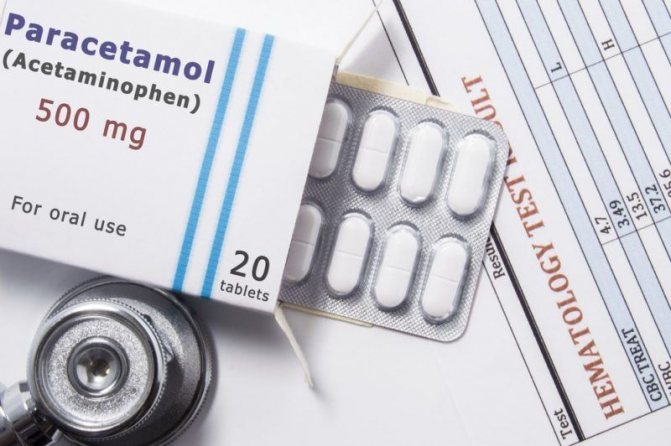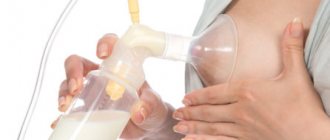Women who breastfeed often refuse medications. This is correct and is explained by the desire to protect the fragile child from harmful substances. But if mom has a high fever, teeth or headache, it is important to take action. After all, women often have to cope with life alone, even if their own health is not in order. Paracetamol is a safe antipyretic for mother and baby during breastfeeding. The principle of action, rules of administration, contraindications are discussed in the article.
Causes of fever in a nursing mother
Hyperthermia during lactation occurs for various reasons. Problems may be related to postpartum complications or chronic diseases. Especially in the first month after giving birth. Acting independently in such cases is dangerous. But minor ailments allow for self-help options.
These include:
- colds;
- the beginning of lactostasis;
- overwork;
- inflammatory processes.
This does not threaten the woman's life, but it complicates daily activities. Experts advise easing the condition with medication.
Taking paracetamol during lactation
Paracetamol is a non-toxic, safe antipyretic during breastfeeding. The substance is absorbed into the blood quickly and is excreted. Using paracetamol as an antipyretic for nursing mothers, you can reduce fever and relieve pain after 25 minutes.
Mechanism of action
Paracetamol contains the active substance of the same name. Used to reduce temperature, pain, and relieve inflammation. It works by affecting the nervous system, blocking the centers of thermoregulation and pain regulation.
After 4 hours it is completely excreted by the kidneys. If you follow the rules of administration and dosage, the content of paracetamol in a woman’s milk is 0.30% of the amount of the drug taken.
Attention! The highest degree of concentration in the blood is observed 60 minutes after application.
Therapists prescribe the drug as a safe antipyretic for hepatitis B.
Effect on lactation
Paracetamol is considered a non-prohibited drug during lactation and does not pose a threat to the baby. But its use requires strict adherence to the doctor’s instructions in order to ensure that less of the drug enters the baby’s body.
On a note! Treatment with paracetamol does not require cessation of natural feeding and does not change the composition and taste of mother's milk.
A high level of paracetamol in a woman’s blood is achieved 40-60 minutes after administration. You need to put your baby to your breast before taking the pill, and then 4 hours later. The drug will enter the baby’s blood in very low doses without causing any harmful effects.
Analogues of Paracetamol during breastfeeding
Although the product is considered a safe medicine, you can still use other drugs that contain Paracetamol. It is allowed to use them in any form, including suppositories and powder. The most popular include:
- cefekon;
- efferalgan
- panadol;
- calpol;
- rapidol
- perfalgan.
Before using the products, it is recommended to review the instructions for use, as well as the price, reviews and analogues of medications. It is better to avoid using combination drugs, as they cause more side effects.
Paracetamol is a medicine with a low level of toxicity, so it is allowed to be used by nursing mothers.
It is recommended to take the drug in a course for three days, or use it as a one-time pain reliever. If a course of treatment is necessary, a doctor can prescribe it, and the doctor also selects the appropriate dosage of the drug. The permissible limit should not be increased, otherwise more Paracetamol will enter the baby’s body than is permissible.
When to take
The use of paracetamol during breastfeeding is justified for the following ailments:
- body temperature above 38.5 ° C;
- aching toothache;
- mild migraine;
- joint pain;
- premenstrual discomfort;
- neuralgia;
- myalgia.
Some women experience stagnation of milk in the breast. This occurs in one of the lobes of the mammary glands. When the disease occurs, a woman feels unwell, similar to the onset of a cold. The temperature rises, the body aches, the chest hurts with stagnant milk.
In this condition, Paracetamol and its analogue Ibuprofen are prescribed. The drugs will relieve pain and allow you to properly eliminate congestion in the chest, avoiding serious complications.
Before taking the drug for headache pain, you should go for a walk or sleep. Perhaps the cause of the malaise was simple overwork.
For tooth pain, taking the drug is justified only before a visit to the dental clinic. Carious teeth have a detrimental effect on the body of a nursing mother, representing a source of infection in the oral cavity. This is a greater health threat.
Many women are afraid to take medications during lactation. But the lack of proper treatment entails a greater risk to the health of the mother and child.
Attention! If treated incorrectly or ignored, lactostasis turns into mastitis.
Some people stop breastfeeding while taking the drug. But a sudden separation from the breast is much more dangerous for the baby’s health than a small dose of paracetamol in mother’s milk.
Is Paracetamol allowed for nursing mothers?
Paracetamol is the most common drug taken for colds.
But there is another situation that every nursing mother may face. Such a situation is lactostasis - stagnation of milk in the ducts of the mammary gland. Most often, lactostasis is observed in primiparous women, as well as when the baby is not applied correctly to the breast and the baby’s sucking process is ineffective. A woman experiences engorgement of the mammary gland, more often, on the one hand, an increase in temperature to high numbers.
Rules for taking antipyretics
Despite its relative safety, paracetamol is taken according to instructions.
- It is permissible to take the tablet in case of hyperthermia above 38.5 °C. Before 38, the use of paracetamol is pointless. The immune system copes with the pathogenic environment.
- Drinking coffee and strong tea along with paracetamol is unacceptable. Caffeine-containing drinks delay the elimination of the substance from the body.
- You need to take the medicine with water at room temperature or mineral water without carbonation.
- During lactation, the maximum period of taking the drug is 3 days. If, after a period of time, hyperthermia is observed, a consultation with a doctor is necessary to find out the reasons.
- The permissible dose for a nursing mother is 3 tablets per day, 500 mcg each.
- The time interval between taking the tablet is at least 4 hours.
- You can take the medicine after you have fed the baby.
- Before taking the drug you need to have a snack.
It is unacceptable to use paracetamol for more than 3 days in a row. The concentration of the substance in the mother’s blood will accumulate and may begin to negatively affect the child’s body.
How to take paracetamol correctly during breastfeeding?
When being treated with paracetamol during lactation, the mother must adhere to several rules:
- Drink the medicine only if the temperature rises above 38 degrees.
- Adhere to the required dosage of the drug. The dose of paracetamol during breastfeeding is 500 mg three times a day.
- Do not take the medicine for more than three days.
- Keep a break between taking paracetamol for at least 4 hours.
- Take the medicine immediately after feeding the baby. This is due to the fact that the drug quickly enters the blood and is also quickly eliminated from the body. It reaches its maximum concentration after 40 minutes, and after 3-4 hours it completely leaves the mother’s body.
- Avoid alcohol (although it is already prohibited during lactation) and drinks that contain caffeine: coffee, cocoa, strong tea. This limitation is due to the fact that the components of these drinks delay the removal of the drug from the body.
- Take paracetamol 1-2 hours after meals. The presence of food in the stomach may slow down the absorption of the drug. If necessary, you can use rectal suppositories.
- Read the instructions carefully before you start taking the medicine. The use of instructions for use of the medicine before starting treatment applies not only to paracetamol, but also to any drug prescribed to a nursing woman.
Contraindications
Paracetamol is contraindicated for use in the following cases:
- increased sensitivity;
- allergy;
- bronchial asthma;
- diseases of the stomach and digestive organs;
- problems with the kidneys and liver;
- 1st trimester of pregnancy;
- consumption of alcoholic beverages;
- low hemoglobin.
Side effects cannot be ruled out. A nursing mother may notice allergic rashes in herself or her baby. When taking paracetamol for a long time, disruptions in the functioning of the kidneys and liver are possible. Often there is a drowsy state, sometimes nausea. Usually a woman knows her own reaction to the medicine, and it is important to closely monitor the baby’s condition. Despite the minimal penetration of the drug into the child’s body, side effects cannot be ruled out. It is better to be observed by a pediatrician during the entire period of admission.
For some conditions, paracetamol is prohibited - heart problems, diabetes, smoking. You can't drink alcohol. The appointment must be made by a doctor.
Baby Nurofen during breastfeeding
According to the instructions, breastfeeding mothers are allowed to use Nurofen.
It is important to monitor the dosage and consult a doctor first!
Indications:
- migraine;
- toothache;
- upper respiratory tract infections;
- flu;
- headache;
- fever;
- back pain;
- polymyalgia rheumatica;
- desminarea, unspecified;
- myalgia;
- neuritis and neuralgia;
- painful menstruation.
Composition: One tablet contains 400 mg of ibuprofen. The following are used as excipients:
- croscarmellose sodium;
- purified water;
- sodium lauryl sulfate;
- industrial methylated alcohol;
- sodium citrate4
- opacode S-1-9460 HV brown;
- stearic acid;
- macrogol 6000;
- colloidal silicon anhydride;
- titanium dioxide;
- sodium carmellose;
- sucrose;
- acacia;
- talc.
Conclusions about paracetamol We suggest you read: Espumisan description. "Espumizan": instructions for use of drops for newborns, composition and dosage of the suspension
:
You must carefully study the instructions and take
paracetamol
only in recommended doses, no more than 3-4 tablets per day.
Otherwise, you can cause a toxic effect on the liver and other organs and systems of the nursing mother and baby.

Treatment with the drug is carried out in a short course.
Long-term use of Nurofen negatively affects the condition of the kidneys, liver and peripheral blood picture.
Side effects:
- risk of hepatitis;
- shortness of breath;
- dryness or irritation of the mouth, pancreatitis;
- hearing and vision impairment;
- dizziness and insomnia;
- cystitis, allergic nephritis;
- skin rash, allergic rhinitis;
- increased blood pressure, heart failure;
- increased bleeding time;
- anemia.
When using the drug for two days, side effects occur very rarely. If you experience any unwanted reactions, you should consult a doctor.
Contraindications:
- The drug can be taken, but with caution, for people suffering from heart failure, during lactation, suffering from diabetes, kidney failure, and stomach ulcers.
- Use caution if you smoke.
- Following all rules of administration and dosage, if there are severe somatic diseases.
- You should not take Nurofen if you have hypersensitivity, peptic ulcers in the acute stage, hemophilia, in the period after coronary artery bypass surgery, or with severe renal failure.
Directions for use: no more than three tablets per day with water. In case of an overdose, abdominal pain, respiratory arrest, headache, tachycardia, coma, and decreased blood pressure may occur.
In case of overdose, gastric lavage, alkaline drink and activated carbon are prescribed.
If the diagnosis has been established, a nursing mother can take Nurofen without fear - there will be no harm to mother and baby! When taking the medicine for two days, feeding may not be interrupted.
If you have been prescribed a long course of taking the drug for chronic joint diseases, you should consult your doctor about the question of whether to continue breastfeeding.
Review of drugs with paracetamol
To reduce high fever, eliminate weakness, heat pain, and ARVI symptoms, use:
- "Cefekon-D" (in the form of suppositories, tablets);
- "Panadol" (tablets);
- "Efferalgan" (suppositories, syrup);
- "Perfalgan" (solution).
What is possible for fever during breastfeeding include combination medications with a lower content of paracetamol (Pentalgin, Coldrex). Despite the low concentration, the analogues reduce the temperature and alleviate the condition of fever, pain, and lethargy.
Drug treatment during lactation is acceptable. By following the recommendations of the attending physician and following the rules of administration, a nursing woman will quickly get in shape without harming the baby and maintaining her own strength. It is better to quickly recover with paracetamol than to suffer for a long time from powerlessness in caring for the baby.
Folk remedies for breastfeeding

A minimum of medications is especially important during breastfeeding. Many ailments and diseases can be treated with folk remedies without harm to health. At least, with the help of safe natural ingredients, you can relieve the symptoms of many ailments.
From temperature
- Cold compress.
- Drink plenty of fluids
- Rubbing with vinegar or alcohol.
- Tea with honey and lemon or tea with raspberries.
For headaches
- Chamomile tea.
- Valerian.
- Compress with cold water and vinegar.
- Cinnamon.
For toothache
- Rinsing sore teeth with very strong green tea with garlic.
- Mix salt, onions, garlic and apply to the sore tooth.
- Rinse with a warm solution of salt and iodine.
Paracetamol during breastfeeding is a safe remedy for fever and pain; you just need to follow the instructions, do not violate the prescribed dosage, follow the rules for nursing mothers, and no side effects will occur for either the mother or the baby. Do not forget that this drug does not cure diseases, it does not affect either viruses or bacteria, it only relieves the symptoms of the disease - reduces fever and pain.











